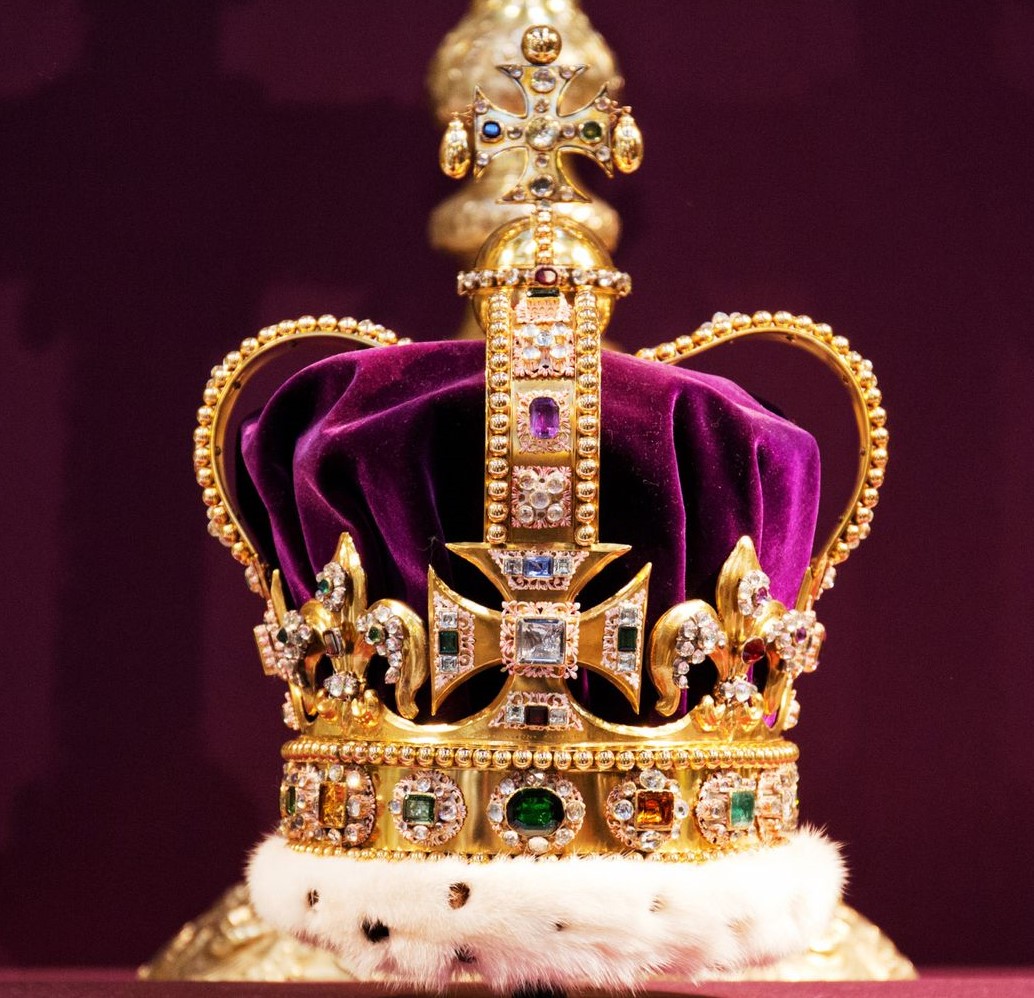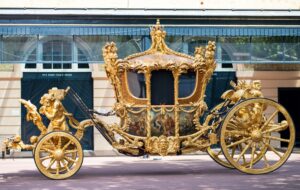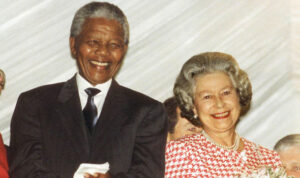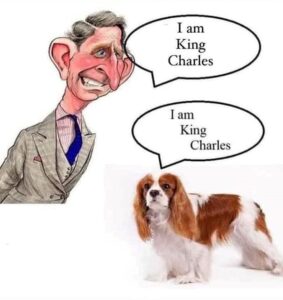By Suzanne Sparrow Watson
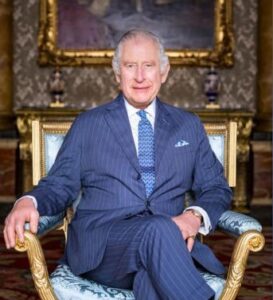 This is quite a big week for us unabashed Anglophiles. The coronation of King Charles will take place on Saturday, with all the pomp and circumstance of…well, a royal coronation. Realistically, this may be the only coronation I witness, although Charles doesn’t look all that healthy. Then again, I’m not so hot some days myself. So, although I would love to live long enough to see William crowned (and observe whatever high jinks Prince Louis might provide), I’ve decided to immerse myself in this coronation. I’ve read about people in the U.S. who are throwing coronation watch parties, where attendees are required to dress for the occasion, including an appropriately outrageous hat. I don’t think I could attend one of those parties – I don’t have a pair of sweatpants or baseball cap fit for the occasion.
This is quite a big week for us unabashed Anglophiles. The coronation of King Charles will take place on Saturday, with all the pomp and circumstance of…well, a royal coronation. Realistically, this may be the only coronation I witness, although Charles doesn’t look all that healthy. Then again, I’m not so hot some days myself. So, although I would love to live long enough to see William crowned (and observe whatever high jinks Prince Louis might provide), I’ve decided to immerse myself in this coronation. I’ve read about people in the U.S. who are throwing coronation watch parties, where attendees are required to dress for the occasion, including an appropriately outrageous hat. I don’t think I could attend one of those parties – I don’t have a pair of sweatpants or baseball cap fit for the occasion.
According to my Ancestry DNA profile, I am 70% English, with another 20% of my make-up from the other UK countries. Even Dash the Wonder Dog has British lineage and clearly, he is the real King Charles, so I’m all in for the spectacle of the coronation. These are my people. Of course, “my people” may very well have been horse thieves or scoundrels of some other ilk who were barred from attending any coronation in their day. But still, there is something in my blood that stirs at the very notion of a royal event.
For those of you who are also interested, or at least mildly entertained, I’ve dug up some fun facts about the event.
- King Charles will be the 40th sovereign crowned at Westminster Abbey, where every sovereign has been crowned since 1066. In fact, before the Abbey, coronations were held at whichever location was most convenient, including Bath, Oxford and Canterbury. However, the religious ceremony has remained largely unchanged for more than 1,000 years.
- More than 2,000 guests will attend the coronation, which is just slightly under the total seating capacity. In contrast, more than 8,000 people attended Queen Elizabeth’s coronation, many of them in special (read “uncomfortable”) specially built grandstands. A small railway track had to be built through the church to transport the scaffolding needed to build them – which, laid end to end, would have reached from London to Paris.
- Charles and Camilla will have a tricked-out ride – the Gold State Coach. Since it was built in 1762, the Gold State Coach has been used at every coronation since that of George IV in 1821. Actually, it is not really gold, but wood painted gold. Still, it weighs four tons, and is so heavy that the horses can only go at a walking pace when pulling it. Queen Elizabeth was not a fan of it. She said it was quite uncomfortable due to its lack of suspension and cushioning.
- The coronation ceremony includes the anointing of the new monarch. The anointing oil has been perfumed with the essential oils of sesame, rose, jasmine, cinnamon, neroli, benzoin and amber and orange blossom. Wow – sounds like something you’d find at Bath and Body Works. There is a royal family connection to the oil. It was consecrated in Jerusalem, produced from olives that grew from groves on the Mount of Olives, at the Monastery of the Ascension and the Monastery of Mary Magdalene, the burial place of Charles’ grandmother Princess Alice of Greece.
- The King will be wearing St. Edward’s Crown. The crown weighs 4 pounds and 12 ounces and is made of solid gold. That’s heavy. To see just how heavy, I put a five-pound sack of flour on my head and marched around the house. Let’s just say I won’t be trusted with valuable jewels anytime soon. The crown was quietly removed from the Tower of London in December to be resized for the King. It was initially made for Charles II’s coronation to replace the medieval crown parliamentarians melted in 1649 after King Charles I was executed. Fact is that the history of kings named Charles is mixed. While Charles I was beheaded, his son, Charles II (the king who the Cavalier King Charles Spaniel is named after) was by all accounts an effective ruler. I’m hoping Charles III ends up with dogs named after him, not with his head perched on Tower Bridge.
It’s going to be a fun weekend watching all of the festivities. I’ve taped hours of coverage and plan to watch with my King Charles, who, undoubtedly, is cuddlier than the real king.
